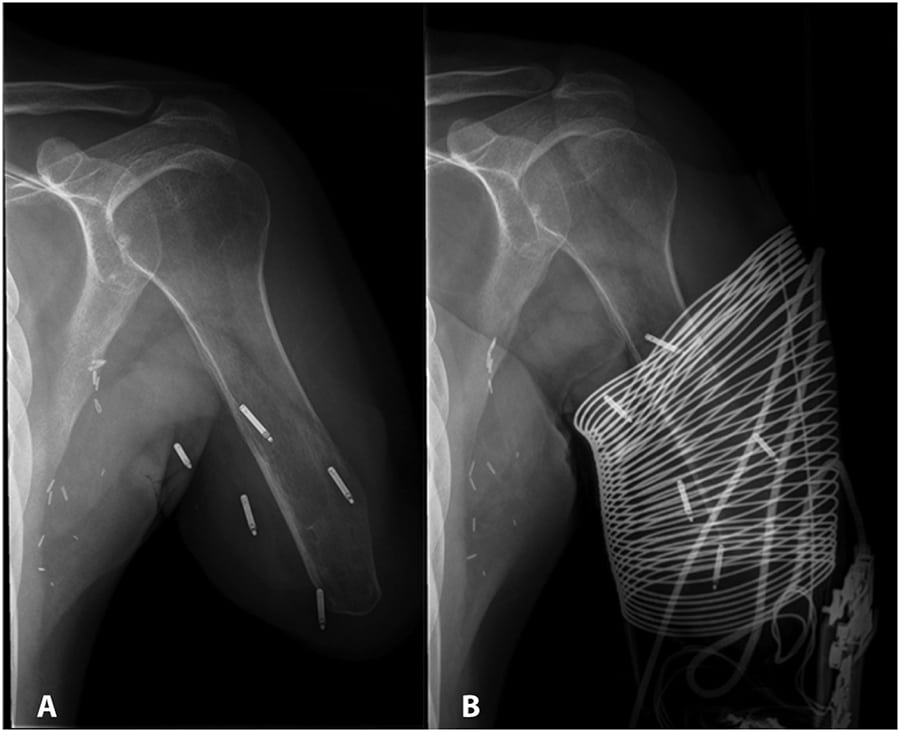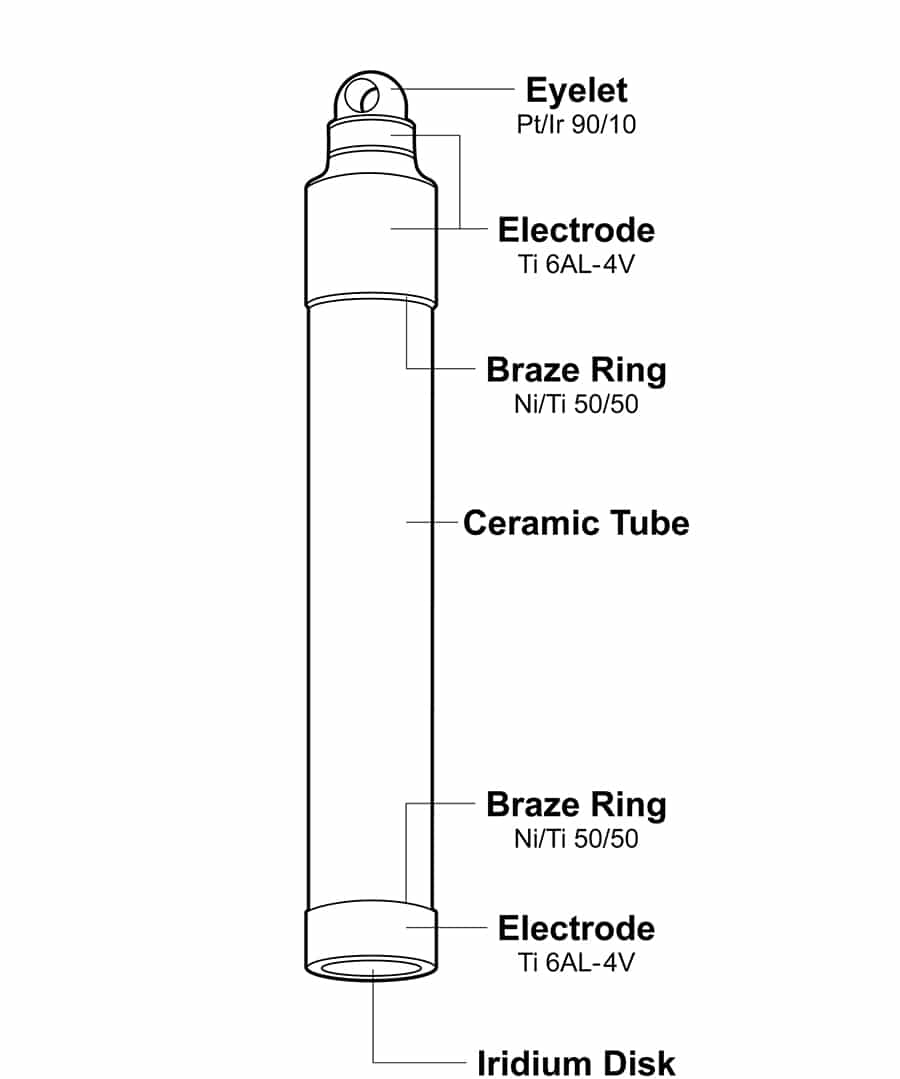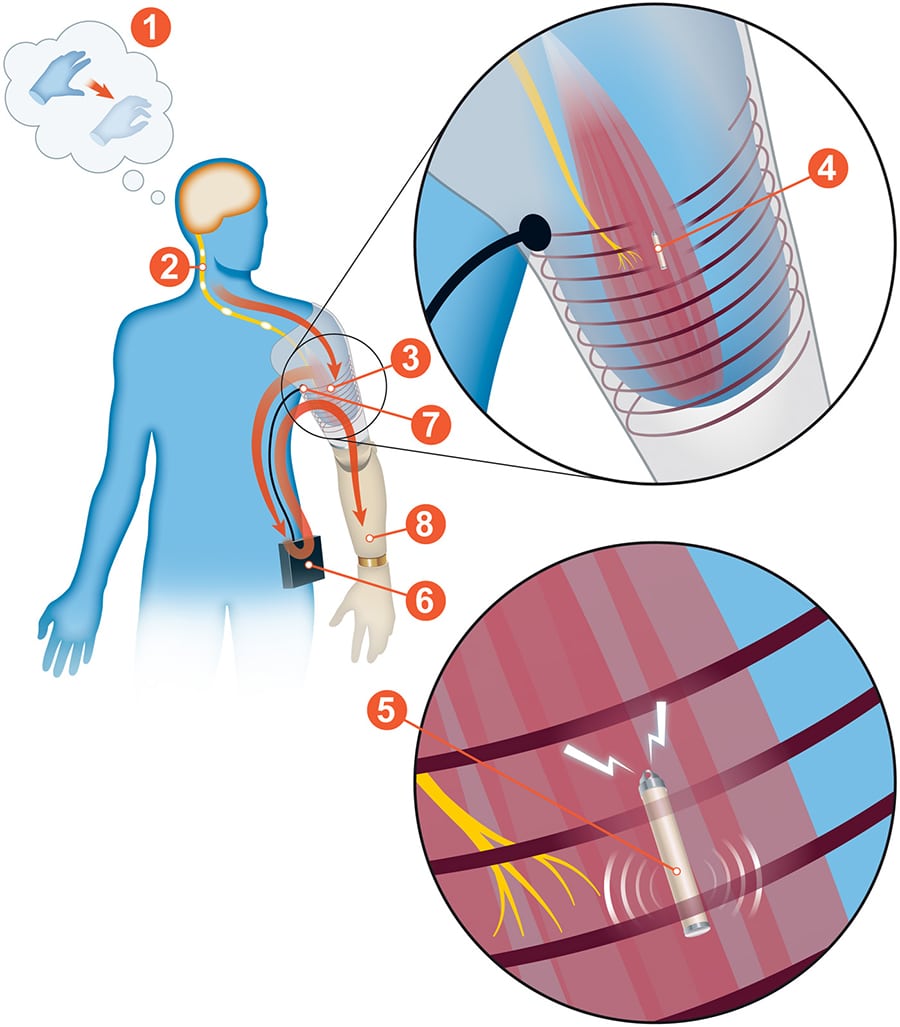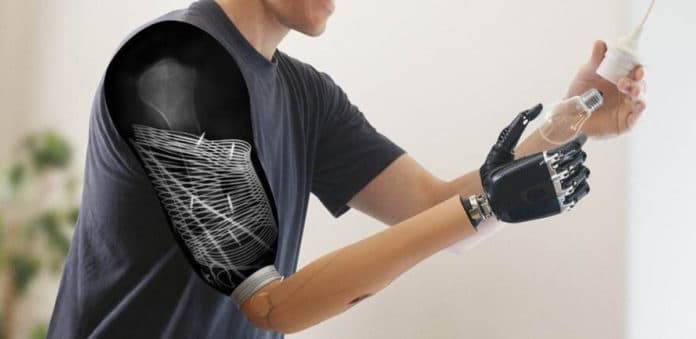Above-elbow amputations are more problematic than any other amputation because the humerus (the long bone in the upper arm located between the elbow joint and the shoulder) is most commonly associated with this phenomenon. And the robotic arm replacement in such amputees is very challenging.
Now it seems like the wireless biosignal transmission is no longer a fringe phenomenon in the field of modern prosthetics. For the first time in the world, a team of researchers led by Oskar Aszmann from MedUni Vienna‘s Department of Surgery, has successfully implanted the IMES (implantable myoelectric sensor) combined with TMR (Targeted Muscle Reinnervation) surgery in three male patients following nerve transfer, to transmit biosignals for wireless control of robotic arms. Based on the number of available target muscles, five to six IMEs were used.

“After more than two years of observation, the results demonstrate extremely reliable data transmission and much quicker and safer use in comparison with standard systems,” says Principal Investigator Assmann, who is very happy with this pilot project.
Wireless implantable myoelectric sensors (IMES) are implants with a ceramic housing of cylindrical shape, 16-mm long and 2.5 mm in diameter. These IMESs wirelessly transmit EMG data to the prosthesis and are powered by inductive coupling using an external coil integrated into the prosthetic socket.

The research team believes that in the near future, the wireless biosocial transmission system will not only be used in the areas of modern prosthetics but will also have a significant contribution in many other biotechnology sectors.
“These patients had had above-elbow amputations as a result of occupational or road accidents. In such cases, they not only have to have the hand and the wrist replaced by a myoelectric prosthesis but the elbow as well.” explains study author Stefan Salminger from MedUni Vienna’s Department of Surgery. “The implanted sensors transmit the muscle signal wirelessly from the amputation stump to the prosthesis and are similarly wirelessly charged by a magnetic coil in the shaft of the prosthesis.”

The entire research, detailed information about the materials and the results are described in the journal “Science Robotics”.
After surgery, these patients are able to control the prosthesis intuitively, in combination with the selective extension of the nerves that were responsible for hand and arm function before the amputation.
The team also believes that this implantable technology could make a significant improvement in muscle signal quality, in particular, and, above all in the reliability of prosthesis control.
